The glaciers that dot the towering peaks of the northern Rocky Mountains are responsible for some of the area’s most breathtaking vistas. They carve out valleys and feed turquoise lakes. As the mountains continue into Canada, the glaciers become more numerous, allowing visitors to see the size and power of these unique natural phenomena up close.
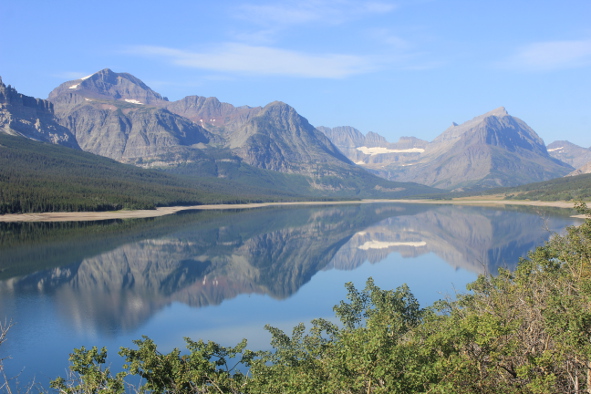
Mountains reflected in Lake Sherburne, Glacier National Park (Photo: Jeff Rindskopf)
From where I stood, the glaciers of Montana’s Glacier National Park were too distant to see clearly, like nothing more than white cake frosting on distant rocky crags, but their impact was visible all around.
Near sunset, I reached Logan’s Pass on the epic Going-to-the-Sun Road and looked east at an enormous valley surrounded by cliffs made from layers of sediment that have been accumulating for 1.5 billion years. I was awed by the sheer scope of it all.
The swooping u-shape of the valley was carved by glaciers, sliding down mountainsides and sculpting the earth beneath their frozen weight. I had seen glaciers before, but never been so aware of the vast impact they can leave on the earth behind them.
Still and Running Waters
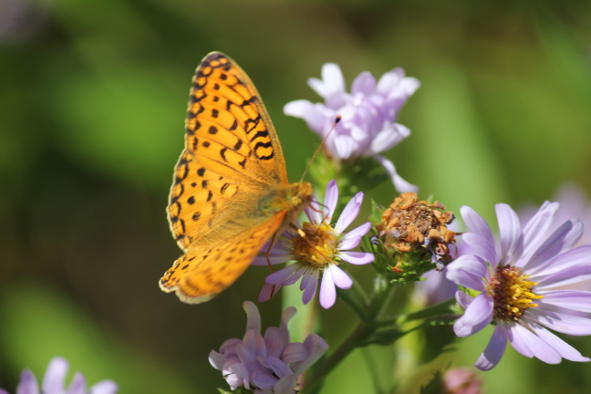
A butterfly on a wildflower in Glacier National Park (Photo: Jeff Rindskopf)
I was halfway to my destination at Cracker Lake the next day when I spotted the trail’s first glacier. Though I was practically melting in the late August heat, the ice field just a few dozen meters away remained solid and blindingly white, except for a strange black spot near its front.
I stared at it perplexed for a few moments and finally realized it was a cave created by the gradual melt of the glacier’s water. The ice became a trickling stream that disappeared underground beneath a hill of tumbled rocks and emerged in daylight beside me. From there, I traced the path of the water through the mountains, making its own way between all the ancient, seemingly immovable rocks. There was no valley here to compare with the one at Logan’s Pass—but give it a billion years or so, and we’ll see.
The hike wound endlessly through beautiful back-country, all abloom with swaying purple wildflowers and sparkling red berries that must look delicious to any grizzlies lurking within the forests all around. That threat disappeared as the trail ascended into alpine territory and finally reached the breathtaking Cracker Lake, where I could see what the glacial runoff looks like when it’s allowed to sit still.
Eroded silt from the nearby Siyeh Glacier gives the lake its opaque turquoise color. Across the lake, a moose with enormous antlers sunned itself along the lake-shore with one leg submerged beneath the water’s brilliant surface. Again, I was amazed to see a glacier so close while the heat is so overwhelming for both man and moose.
Unfortunately, the glaciers aren’t as impervious to the weather as they might seem. Disturbingly, the glaciers of Glacier National Park are fast disappearing due to climate change, and I hate to think that the park’s name will seem like a joke if the trend continues.
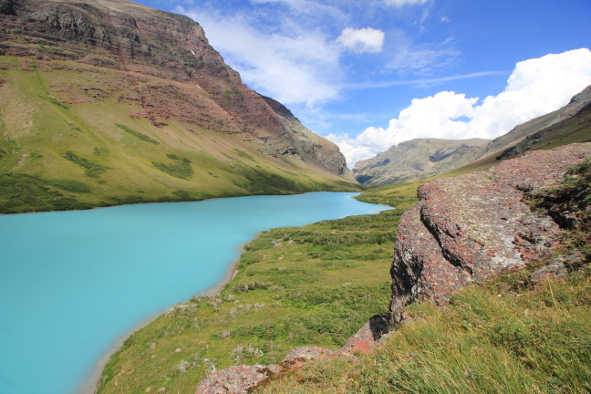
Cracker Lake (Photo: Jeff Rindskopf)
The Canadian Alps
Thick glaciers and turquoise lakes became commonplace as I drove further north into Canada’s Banff National Park and then along the aptly-named Icefields Parkway, but my first excursion in the area was actually the furthest from the glaciers that so transfixed me this trip, on Lake Minnewanka. I rowed my inflatable kayak and let my feet glide along the water, amazingly clear but not as vibrant as the last due to a lack of silt.
The glaciers still created the amazing scene before me. Their weight compacted the mountains and collapsed the valleys that became havens for diverse wildlife, and their runoff formed this chilly freshwater lake that attracts the torrents of over-sized bugs that kept buzzing around my kayak.
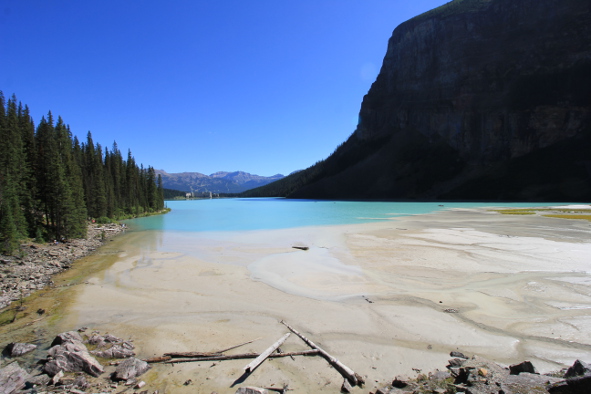
Lake Louise (Photo: Jeff Rindskopf)
Lake Louise is just as vibrant as Cracker Lake but far more popular, with a ritzy European-style chateau and ski resort just beside it. The crowds thinned out the further I went along my hike towards the Plain of Six Glaciers tea house, a welcoming log cabin that serves lunch and hot brews to winded hikers. It was built in 1924 by Swiss guides; commissioned by the Canadian government to help attract tourism after a new railroad made these mountains accessible for the first time.
The hike continued past the tea house and into the far corner of this barren gray valley, crowded by glaciers and crisscrossed by underground networks of running water that all lead downhill to Lake Louise. Kayaks were orange dots within a turquoise pool and ski trails were clean lines drawn through bright green mountains.
The glaciers weren’t quite so pure here. As the thick snowfields sloped down, they became dusted with dirt and then covered with limestone scree, making it nearly impossible to tell where the glaciers ended and the earth began.
The closest glacier was directly above me, dripping freezing water down a perfectly straight cliff side. I stood beside the runoff and set my canteen down to collect some glacial water for the walk back, one drop at a time.
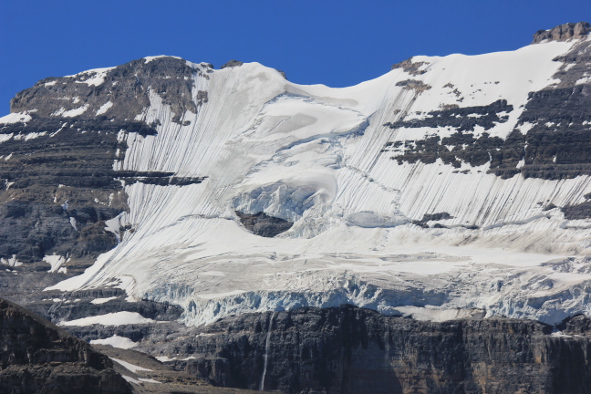
Glaciers in the Plain of Six Glaciers (Photo: Jeff Rindskopf)